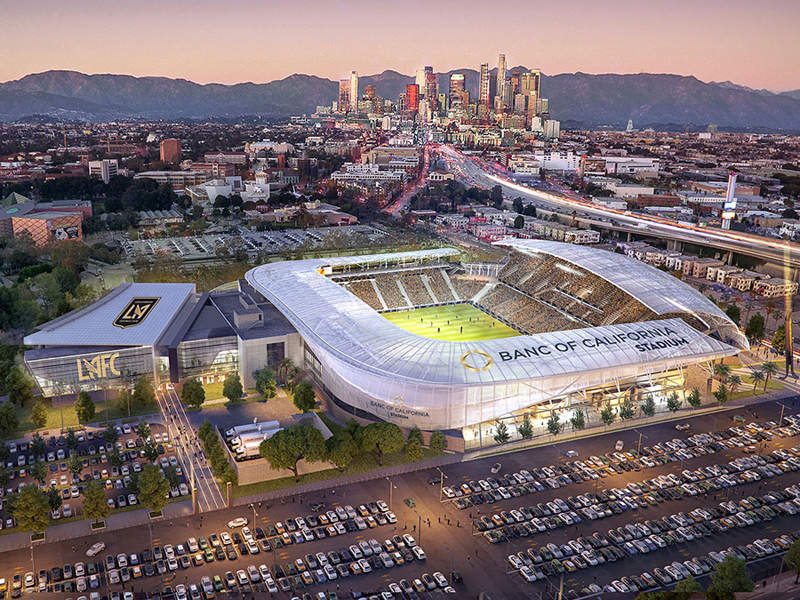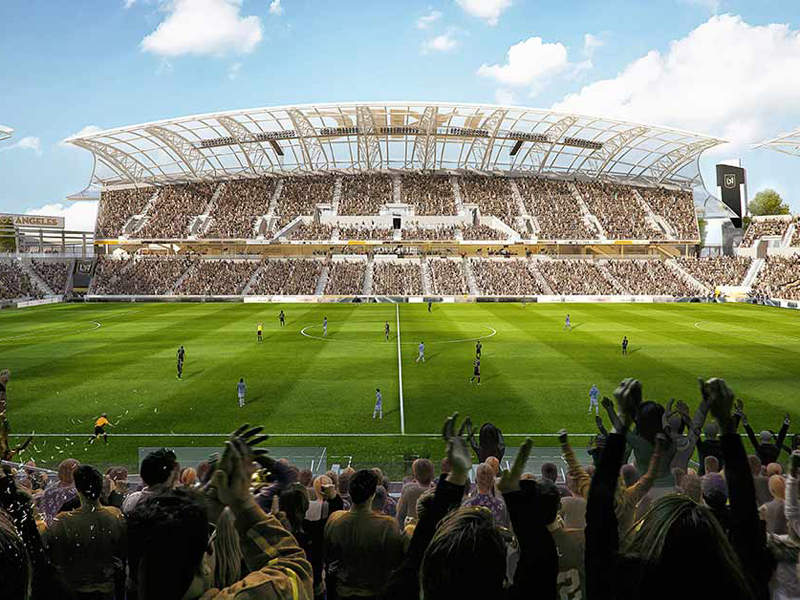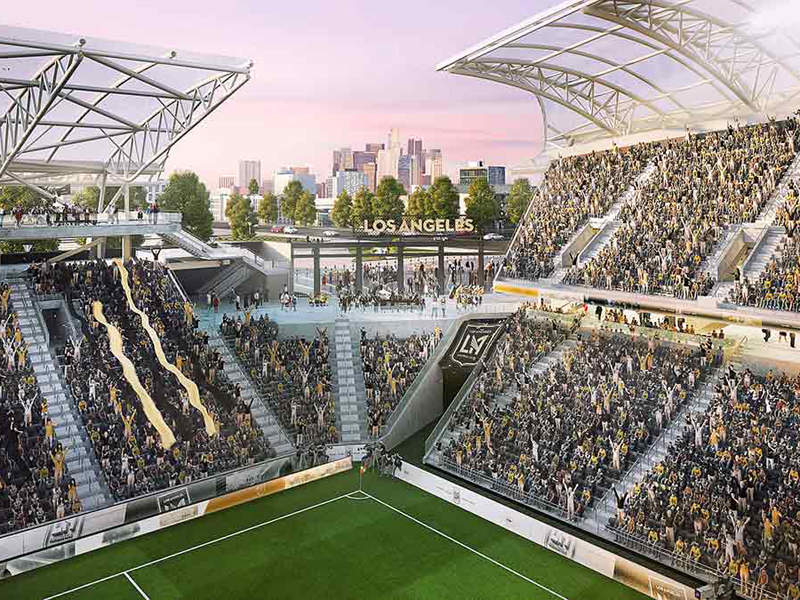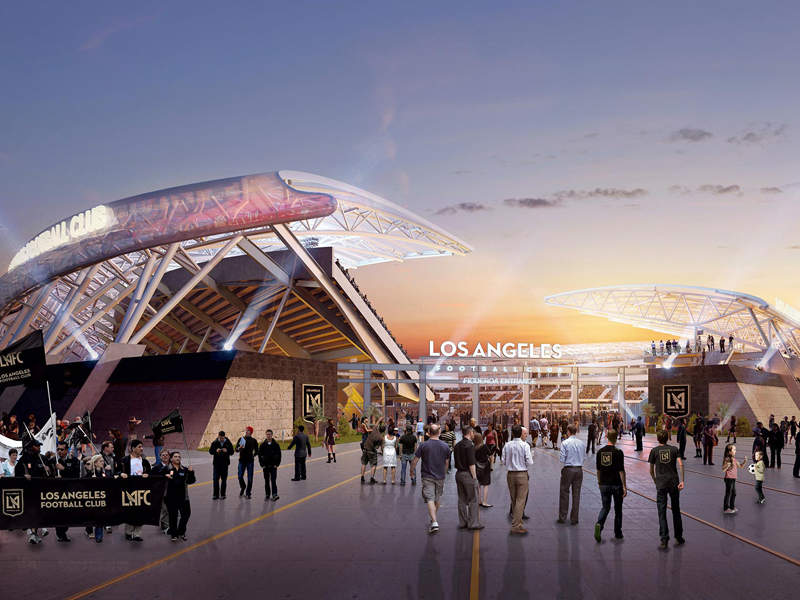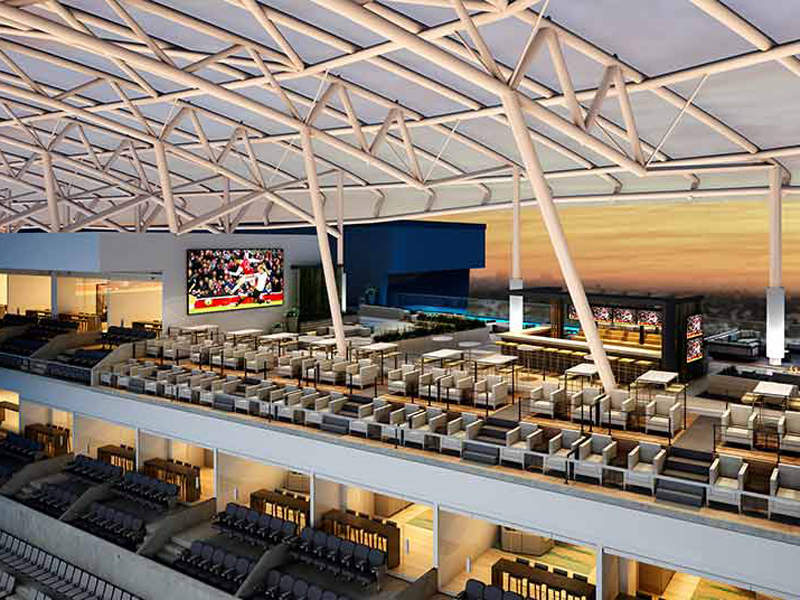Los Angeles Football Club, a member of the Major League Soccer (MLS), opened its new 22,000-seat capacity soccer stadium located in California, US in April 2018.
The new stadium was named Banc of California Stadium, as agreed in a naming-rights deal signed with Banc of California in August 2016. It is the first open-air stadium to be built in Los Angeles after the Dodger Stadium in 1962.
The $250m project broke ground in August 2016.
The stadium project generated more than 1,200 jobs during construction and 1,800 full-time operational jobs. It is also expected to generate $129m in annual economic activity and $2.9bn over the next 30 years.
Site and location of the new stadium
The stadium was constructed in Exposition Park on the former site of Los Angeles Memorial Sports Arena, which is located at 3939 S Figueroa, Los Angeles, California. The facility is located adjacent to the Los Angeles Memorial Coliseum and the south of the University of Southern California main campus.
Surrounded by the African American Museum, Natural History Museum, and California Science Centre, the site serves as a hub for national and international visitors ahead of the 2028 Olympic Games.
The site is easily accessible through public transportation and the Expo Line Light Rail.
Banc of California stadium design details
The stadium was designed to meet the standards of the Federation Internationale de Football Association (FIFA). Its roof rises 85ft above Figueroa Street and is covered with 190,000ft² of ethylene tetrafluoroethylene (ETFE) canopy, which minimises glare and reflects heat.
The supporting structure of the stadium consists of a deep single-storey basement at field level, which provides views less than 15ft from the pitch. The seating of the supporters’ section will be the steepest at 34°, with the closest seats located 12ft away from the touchline.
The stadium can be used for concerts and other community events with special seating expandability to more than 35,000 seats utilising the pitch.
The pitch of the stadium is covered with 86,000ft² of natural Bermuda grass suitable for the climate in southern California. Construction of the stadium required the use of more than five million pounds of steel.
Facilities at Banc of California stadium
The stadium features premium spaces such as Sunset level club, Founders level club, Figueroa level club and Directors lounge. The Sunset level club provides unparalleled views of the city to the spectators, while the Figueroa level club features communal-style seating.
Field level club covers an area of 15,576ft² and includes a 735ft² lobby while the Founders club covers an area of 8,791ft² and includes a 1,408ft² exterior patio. In addition, 6,018ft² was dedicated to the Figueroa club and 6,985ft² to the Sunset club.
The stadium also includes restaurants, retail and conference space, training rooms, bars and locker rooms. Additionally, it includes party suites with a seating capacity of 30.
A nursing station for new mothers is also provided on the main level concourse. Additionally, the stadium is capable of accommodating more than 440 bicycles.
Sustainable features of Banc of California stadium
The Banc of California stadium was designed to be a LEED silver-certified building. It features elevating green and open spaces in the community. An integrated bike path plan close to the stadium premises was developed as part of the project.
The stadium also uses renewable energy and rainwater harvesting and includes 5% parking spaces with electric car charging stations. Further, 20% of the infrastructure is electric-vehicle (EV) ready.
Contractors involved
Gensler was the designer and architect, while PCL Construction was appointed as the general contractor for the construction of the stadium.
SC Railing was subcontracted to design the seating system, while Vector Foiltec has provided the Texlon® ETFE canopy for the stadium.
Helou Construction was contracted for the installation of glass and glazing, while structural and facade engineering services were provided by Thornton Tomasetti.
Studio-MLA led the design of the stadium site, while civil engineering works were handled by KPFF Consulting Engineers.
Millennium was the field consultant and Nous Engineers was the roof engineer.
ME Engineers provided mechanical, electrical, and plumbing (MEP) services, while lighting services were provided by First Circle.
Audiovisual services were provided by Idibri.

